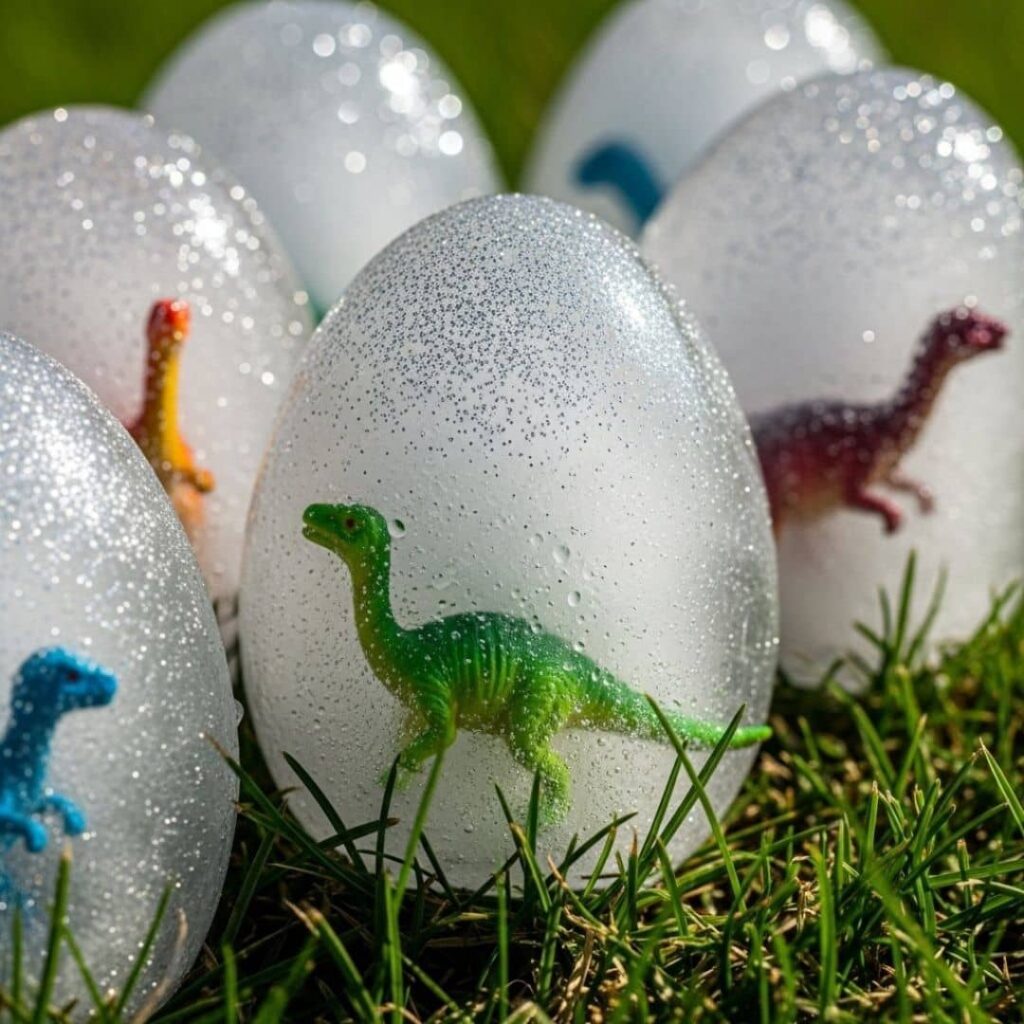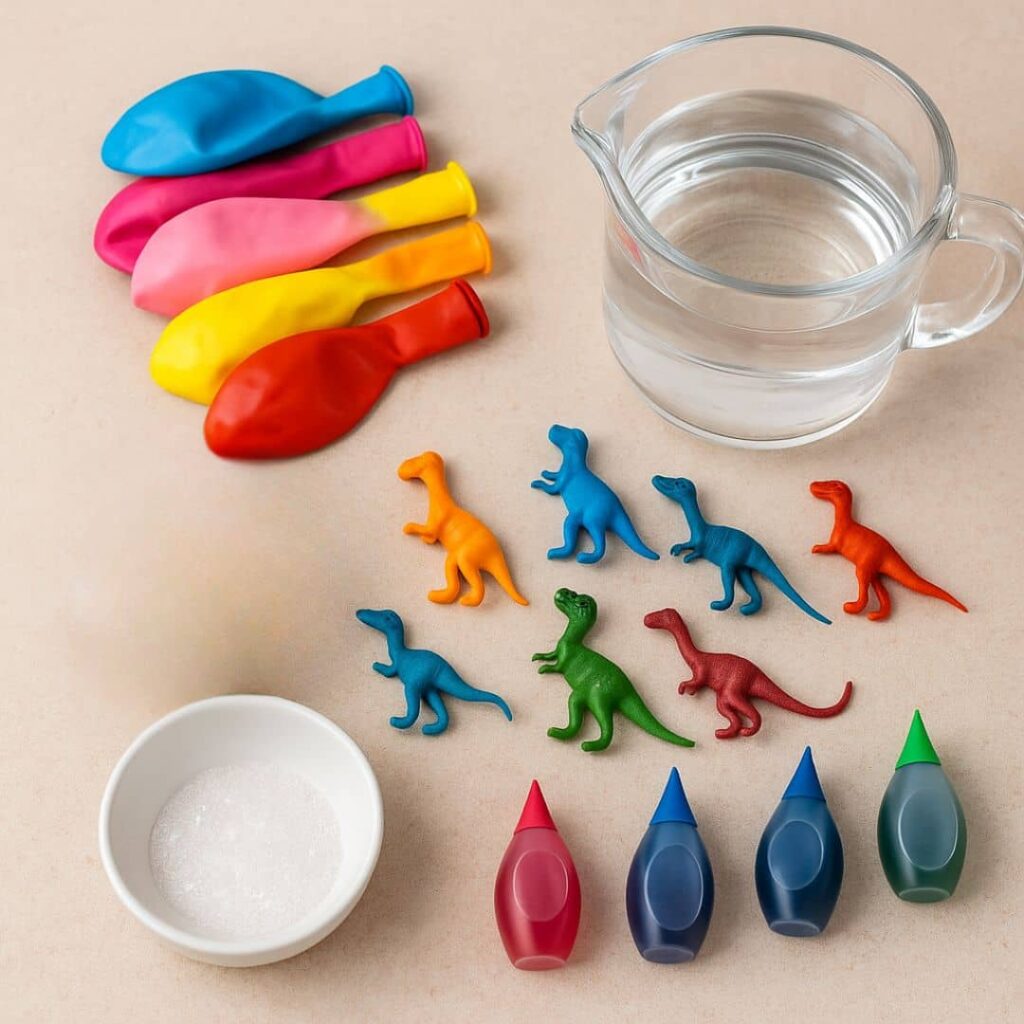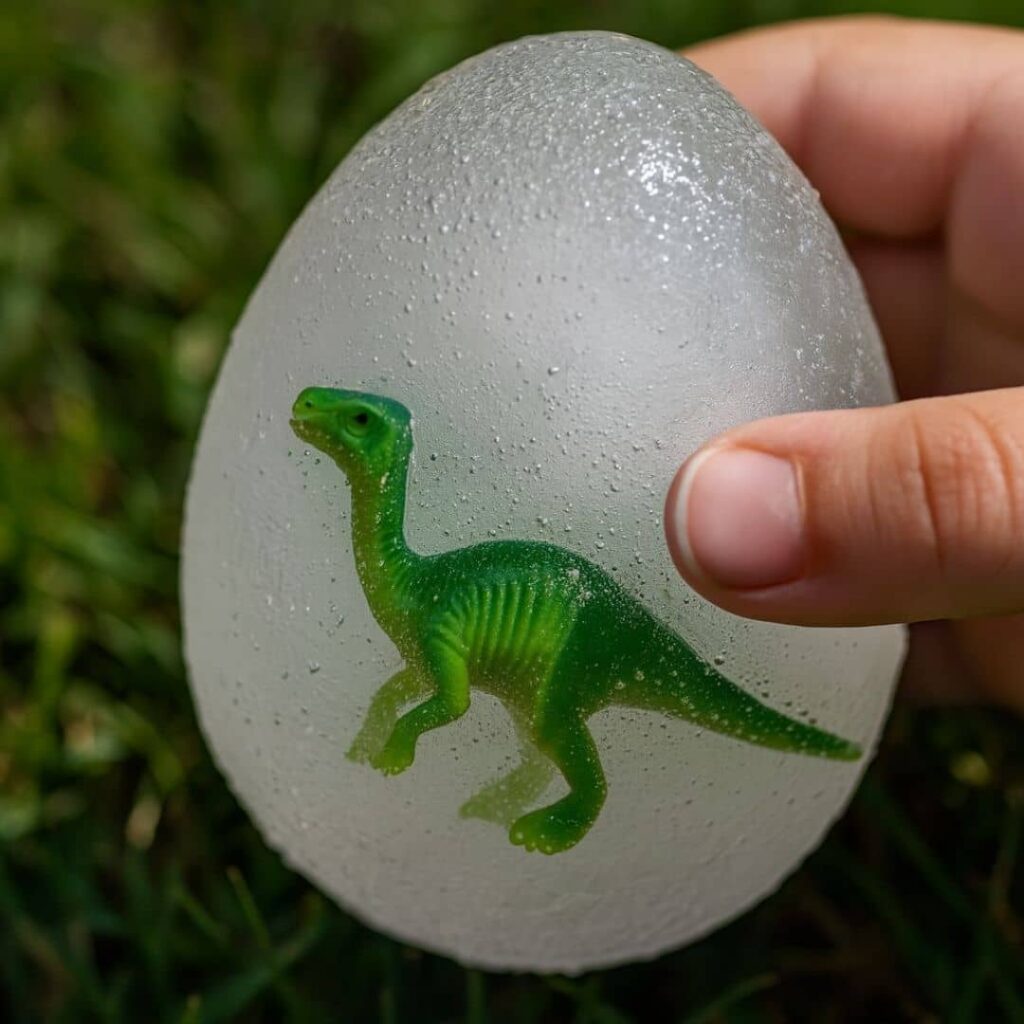Frozen dinosaur eggs are the ultimate DIY sensory activity. They combine science, creativity, and hands-on fun, all in one magical experience that kids absolutely love. Whether you’re looking for a screen-free activity, a birthday party idea, or just a way to beat the summer heat, this project brings imagination to life.

What Are Frozen Dinosaur Eggs?
These icy creations are made by freezing small dinosaur toys inside water-filled balloons. Once solid, the balloon is removed, revealing an egg-like sphere of ice with a dinosaur trapped inside. Kids can then use warm water, salt, or tools to excavate their prehistoric prize.
It’s the perfect mix of pretend play, fine motor development, and basic science. And best of all, you only need a few simple materials.
Why This Activity Is Great for Kids
Frozen dinosaur eggs appeal to kids of all ages. Here’s why this activity is a winner:
- Sensory exploration: Children experience temperature changes, textures, resistance, and water flow.
- STEM learning: They get an intro to concepts like freezing, melting, cause and effect, and the properties of water and salt.
- Creativity and storytelling: Once the dinosaur is revealed, play continues as they create their own Jurassic adventures.
- Fine motor practice: Using droppers, spoons, or squeeze bottles strengthens little hands.
This activity is also a great tool for homeschooling, summer camps, or classroom learning stations.
Supplies You Will Need
- Balloons (standard size, clear or colored)
- Mini plastic dinosaur figures (no larger than 2 inches)
- Water
- Freezer
- Glitter (optional)
- Food coloring (optional)
- Salt (optional)
- Sensory tools: spray bottles, droppers, pipettes, spoons, warm water bowls

How to Make Frozen Dinosaur Eggs: Step-by-Step
1. Insert the Dinosaur
Stretch the balloon gently. Push a small plastic dinosaur into the balloon’s neck. This step is easier with two people: one holds the balloon open while the other inserts the toy.
2. Add Water
Fill the balloon about two-thirds full with tap water. Avoid overfilling. For colorful eggs, add food coloring to the water before pouring it into the balloon. For a magical touch, add a pinch of glitter.
3. Tie and Freeze
Tie a tight knot in the balloon. Place it in a bowl or container to prevent it from rolling and freeze for at least 6 to 8 hours, preferably overnight.
4. Peel and Reveal
Once completely frozen, take the balloon out of the freezer. Use scissors to cut and peel away the latex. You’ll be left with a shimmering, frozen egg ready for excavation.
How to Set Up the Excavation Station
Lay a towel, tray, or large shallow bin on the table or ground. Arrange the frozen eggs inside. Provide warm water in bowls or bottles and let kids use spoons, droppers, or salt to melt the ice. Encourage them to experiment with different methods.
You can even turn it into a “dinosaur rescue mission,” where each child gets to free one dino from its frozen trap.
Optional Add-Ons to Enhance the Activity
- Glitter bombs: Mix glitter into the water before freezing for extra sparkle.
- Volcano theme: Combine this activity with a baking soda and vinegar “lava” eruption.
- Glow in the dark eggs: Use glow water or neon food coloring under a black light.
- Timed challenge: Turn it into a race to see who can melt their egg first using safe methods.
Common Mistakes to Avoid
- Using fragile or cheap toys: Always use sturdy plastic figures that won’t break when frozen.
- Overfilling the balloon: Too much water leads to oversized eggs that freeze unevenly.
- Forgetting a bin or towel: The melting ice will create puddles, so be prepared.
- Not tying the balloon properly: An untied balloon may leak in the freezer or break.

Educational Benefits Beyond Fun
Frozen dinosaur eggs support child development in many ways:
- Science observation: Kids watch freezing, melting, and simple chemical reactions in real-time.
- Problem solving: They explore strategies for melting ice with tools or temperature.
- Language development: Describing the process helps build vocabulary.
- Focus and patience: Slowly melting the ice teaches persistence.
Storage and Cleanup Tips
Once the dinosaurs are released, dry and store them for future activities. Leftover glitter or colored water can be rinsed away with warm water. Consider using a waterproof mat or doing the activity outdoors to minimize cleanup.
Can the dinosaur toys be reused after freezing?
Yes. Once the ice has melted and the figures are free, simply rinse them with warm water, dry thoroughly, and store them for future use.
What type of balloons should I use for this activity?
Use standard party balloons made from latex. Choose medium or large sizes to allow enough room for water and the toy inside.
How long do the frozen eggs take to fully freeze?
On average, the balloons need between 6 and 8 hours in the freezer to solidify completely. Overnight freezing is recommended.
Is this activity safe for younger children?
Yes, with supervision. Avoid small toys for toddlers, and do not allow them to handle uninflated or broken balloons.
How can I speed up the melting process during the excavation?
Provide warm water in bottles or cups. Salt can also be used to help melt the ice faster.
Can I add color or sparkle to the eggs?
Yes. Add food coloring or glitter to the water before freezing to make the eggs more vibrant and fun.
Can this be done outside?
Definitely. Outdoor play is ideal for this activity and makes cleanup easier. Set up a water table or a shaded area with towels or trays.
Conclusion
Frozen dinosaur eggs offer a creative, hands-on way to spark curiosity and joy in kids. Simple to make, inexpensive, and endlessly fun, they bring science and imagination together in the best possible way.
Whether you’re planning a party, hosting a playdate, or looking for a unique educational craft, this DIY project is sure to be a favorite.






